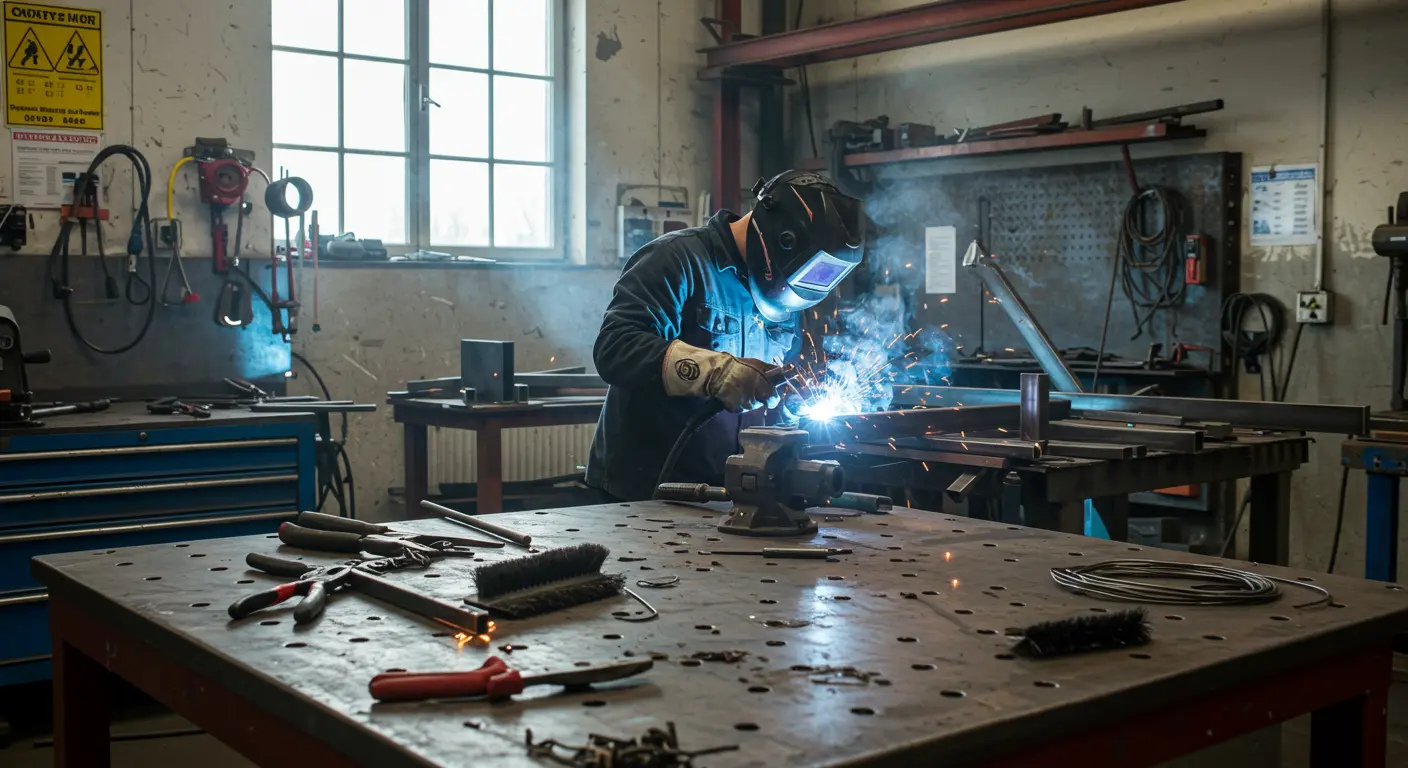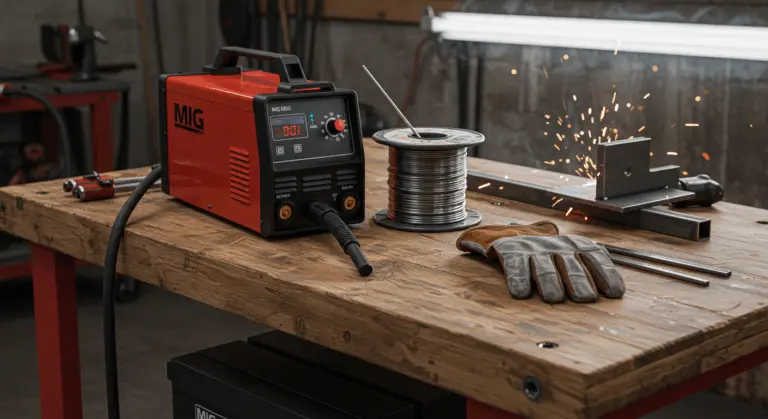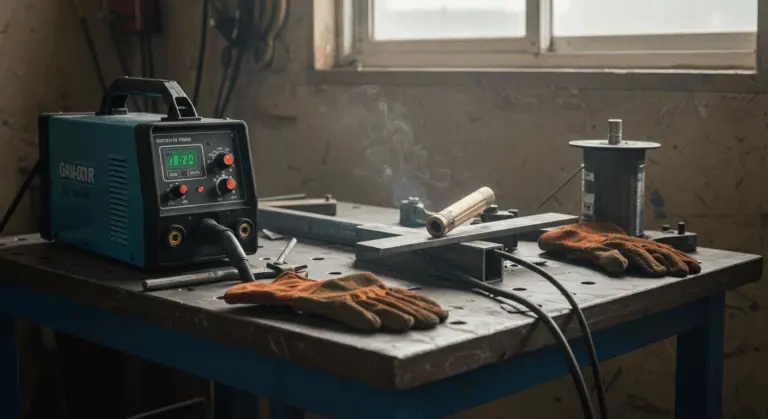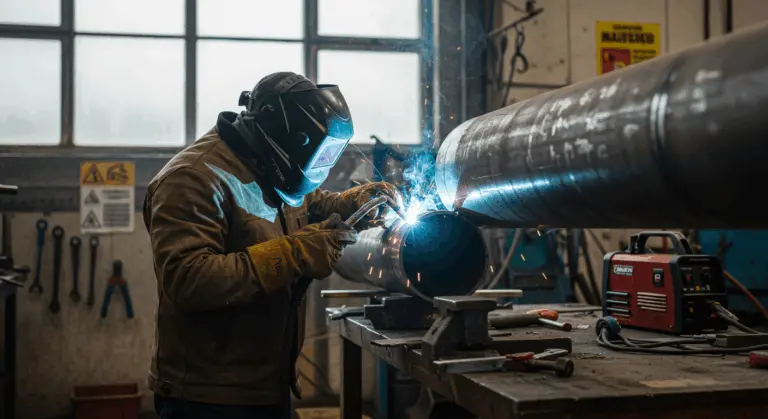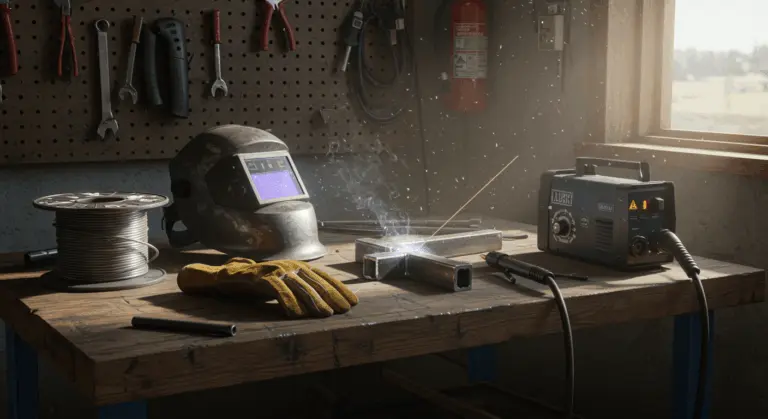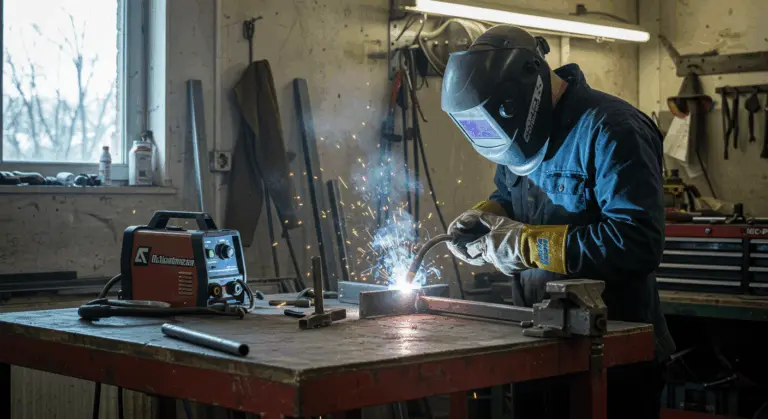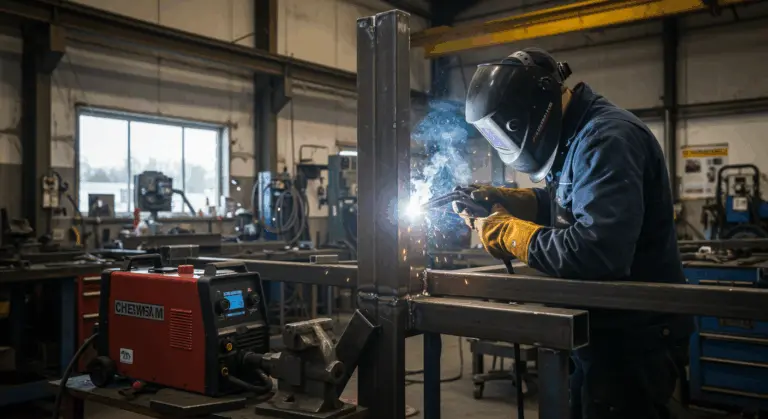Overview of Welding Types and Their Applications
Welding is a fabrication process that joins materials—primarily metals and thermoplastics—through fusion. Mastering the diverse welding techniques, each with its unique characteristics and applications, is essential when selecting the optimal process for any given project.
The four primary welding processes that form the backbone of the industry are:
-
Gas Metal Arc Welding (GMA/MIG)
-
Gas Tungsten Arc Welding (GTA/TIG)
-
Shielded Metal Arc Welding (SAW/Stick)
-
Flux Cored Arc Welding (FLAW)
These fundamental methods account for the majority of welding operations across various industries.
Beyond these main types, welding processes fall into several broader classifications:
-
Fusion Welding: The base metals are melted together.
-
Arc Welding: An electric arc generates the required heat.
-
Resistance Welding: Pressure and current are applied to create the weld.
-
Solid-State Welding: Materials are joined without melting the base metals.
-
Specialized Techniques: Includes methods like laser beam, electron beam, and hermit welding.
Choosing the right welding process hinges on multiple critical factors:
-
Materials being joined
-
Thickness requirements
-
Project environment
-
Desired weld quality
-
Production volume
-
Cost considerations
Take MIG welding—its versatility makes it a manufacturing and automotive favorite. TIG welding, by contrast, dominates aerospace applications where precision reigns supreme. Understanding these distinctions leads to exceptional results.
Gas Metal Arc Welding (MIG) – Versatile and Efficient
Gas Metal Arc Welding (GMA), commonly known as MIG (Metal Inert Gas) welding, stands out as one of the most versatile and widely adopted welding processes in modern industry. This technique employs a continuous solid wire electrode fed through a welding gun, which melts and fuses with the base metal. Meanwhile, an external shielding gas—typically argon, carbon dioxide, or a custom mixture—protects the weld pool from atmospheric contamination.
MIG welding’s popularity stems from its combination of simplicity and effectiveness. The equipment features a spool-fed wire system with intuitive controls for shielding gas flow and wire feed speed, making it surprisingly accessible even for welding newcomers. Its semi-automatic nature enables significantly faster production rates compared to manual processes like stick welding, all while maintaining impressive weld quality.
One of MIG welding’s key advantages lies in its remarkable versatility across material types and thicknesses. From delicate sheet metal to robust structural components, MIG welding effectively joins steel, stainless steel, aluminum, and various other metals with equal proficiency. This adaptability has made it the go-to choice for fabrication shops handling diverse projects. Additionally, MIG welding typically produces less spatter than competing processes, resulting in cleaner welds that demand minimal post-weld cleanup.
Equipment innovations like the Arc captain MIG200 Multi Process MIG Welder and MIG205 Pro Gas MIG Welder exemplify the modern evolution of this technology, offering enhanced control features and multi-process capabilities. These advancements have strengthened MIG welding’s position as an indispensable process in manufacturing, construction, maintenance, shipbuilding, and general fabrication applications where efficiency and weld quality cannot be compromised.
MIG Welding Applications in Industry
MIG welding serves as a cornerstone process across numerous industries, thanks to its compelling combination of speed, versatility, and cost-effectiveness:
TIG Welding – Precision and Quality
Gas Tungsten Arc Welding (GTA), commonly known as TIG (Tungsten Inert Gas) welding, represents the pinnacle of precision and quality in the welding world. Unlike other processes, TIG welding employs a non-consumable tungsten electrode to create the arc while the welder manually feeds filler metal into the weld pool as needed. This elegant separation of heat source and filler material grants welders unparalleled control over the entire welding process.
The exceptional precision of TIG welding makes it the preferred method for working with thin materials where burn-through poses a constant threat. The process allows welders to apply heat with surgical accuracy, creating clean, robust joints even on the most delicate components. This level of control applies equally to the weld pool itself, enabling skilled operators to achieve consistent penetration and bead appearance that other processes simply cannot rival.
TIG welding typically employs a Direct Current Electrode Negative (DEN) setup and high-frequency start to prevent contamination of the tungsten electrode. For materials like aluminum, alternating current (AC) provides the essential cleaning action necessary for quality welds. The process relies on inert gas shielding—usually argon—to protect the weld area from atmospheric contamination, resulting in welds that are not only structurally superior but also aesthetically exceptional.
While TIG welding demands greater skill and meticulous attention to detail than other processes, the results fully justify the investment in training and equipment. The process produces welds with minimal spatter and zero slag, eliminating much of the tedious post-weld cleanup required with other methods. For applications where weld quality cannot be compromised—critical structural components, pressure vessels, or decorative metalwork—TIG welding delivers exceptional results that combine strength with visual appeal.
TIG Welding in Aerospace and Automotive
TIG welding proves indispensable in sectors that demand the highest quality and precision:
Shielded Metal Arc Welding (SAW) – The Classic Method
Shielded Metal Arc Welding (SAW), commonly known as stick welding or manual metal arc welding (MAW), represents one of the oldest and most fundamental welding processes still widely used today. This time-tested method employs a flux-coated consumable electrode that conducts electric current to strike an arc between itself and the base material. As the electrode melts, it serves a dual purpose—providing the filler metal for the weld while simultaneously creating a protective gas shield and slag covering from its flux coating.
The enduring popularity of SAW stems from its remarkable versatility and straightforward design. Equipment requirements are minimal—essentially just a power source and electrodes—making it highly portable and perfectly suited for field work. This simplicity translates to lower initial investment costs compared to other welding processes, which proves particularly advantageous for small operations or occasional welders. Moreover, SAW can be performed in virtually any environment, including outdoors in windy conditions where gas-shielded processes would falter.
SAW excels with ferrous materials like steel and iron, and is commonly employed in:
-
Construction projects
-
Heavy machinery fabrication
-
Pipeline installation (earning it the nickname “stovepipe welding”)
-
Repair work in the mining and oil & gas industries.
While SAW offers numerous compelling advantages, it does have notable limitations. The process generally operates slower than semi-automatic methods, with more frequent interruptions to change electrodes. It also produces slag that must be meticulously removed between passes and after welding completion. Despite these drawbacks, SAW remains irreplaceable in many scenarios due to its proven reliability, adaptability to challenging conditions, and relatively modest operator training requirements. For many welders, mastering stick welding serves as the foundational bedrock upon which all other welding skills are built.
SAW vs FLAW – Key Differences
While both are flux-based processes, Shielded Metal Arc Welding (SAW) and Flux Cored Arc Welding (FLAW) have key differences crucial for process selection:
| Feature | SAW (Stick) | FLAW (Flux-Cored) |
| :— | :— | :— |
| Electrode | Consumable stick electrode; requires frequent replacement. | Continuous tubular wire electrode fed from a spool. |
| Productivity | Slower due to manual electrode changes. | Higher due to continuous wire feed and higher deposition rates. |
| Shielding | Relies solely on the electrode’s flux coating. | Uses flux from the wire core, sometimes with an external shielding gas (dual shield). |
| Portability | Highly portable; requires only a power source and electrodes. | Less portable; requires a wire feeder and sometimes a gas cylinder. |
Flux Cored Arc Welding (FLAW) – High Deposition Rates
Flux Cored Arc Welding (FLAW) has transformed industrial welding applications by combining the user-friendly nature found in MIG welding with substantially higher deposition rates and exceptional weld properties. Developed in the 1950s as a robust alternative to manual metal arc welding, FLAW utilizes a tubular wire electrode filled with flux compounds that generate protective gases when melted, creating an effective shield around the weld pool. This effective design allows for efficient welding even in challenging environmental conditions.
One of FLAW’s key advantages lies in its impressive deposition rate, which can be several times higher than SAW (stick welding). This makes it particularly valuable for applications involving thick materials where substantial filler metal is required. The process employs a constant-voltage welding power supply similar to that used in MIG welding, with the wire continuously fed through the welding gun. This setup enables long, uninterrupted welds that dramatically boost productivity in manufacturing and construction settings.
FLAW comes in two primary variants:
-
Self-Shielded (FLAWS): Generates its own shielding gas from the flux core, making it ideal for outdoor work in windy conditions.
-
Gas-Shielded (FLAG / Dual Shield): Combines the internal flux with an external shielding gas (e.g., CO2 or an argon mix) for enhanced weld properties and higher deposition rates.
The versatility and efficiency of FLAW make it indispensable across numerous industries and applications:
Advanced Welding Techniques – Electron Beam and Laser Welding
Advanced welding technologies like electron beam welding (ECW) and laser beam welding (LBW) are at the forefront of joining technology, offering unprecedented precision and capabilities that traditional welding methods simply cannot match. These high-energy density processes have transformed manufacturing in industries where exceptional accuracy, minimal heat-affected zones, and superior weld quality are absolutely essential.
Electron beam welding uses a focused beam of high-velocity electrons to generate intense heat at the joint interface. The process typically occurs within a vacuum chamber, which prevents beam scattering and oxidation while enabling exceptional penetration-to-width ratios. This unique capability allows ECW to create deep, narrow welds with minimal distortion, making it ideal for joining thick sections in a single pass. The precision of ECW enables it to join components for critical applications—from tiny medical implants to massive spacecraft parts—all with consistent quality and consistent reliability.
Laser welding employs a highly concentrated beam of coherent light to create precise, controlled welds. Unlike ECW, laser welding can often be performed without a vacuum, though shielding gas is typically used to prevent oxidation. The process offers several distinct advantages: it operates approximately ten times faster than traditional MIG welding, produces minimal heat input (reducing distortion), and creates strong, aesthetically pleasing welds. These characteristics have made laser welding increasingly popular in automotive, aerospace, and medical device manufacturing, where both performance and appearance are paramount.
Both technologies share common benefits that distinguish them from conventional methods:
-
High Automation Potential: Computer-controlled systems ensure repeatable, high-quality results.
-
Precision: The ability to focus energy precisely allows for welding dissimilar materials.
-
Accessibility: Can join components in locations inaccessible to traditional welding torches.
Though the initial investment is substantial, their speed, precision, and reduced post-weld processing requirements often make them cost-effective for high-value applications. As technologies like handheld laser welders become more accessible, their adoption continues to expand.
Safety in Welding – Essential Precautions
Welding safety is paramount in preventing injuries and fostering a productive work environment. Every welding operation, regardless of scale or setting, presents potential hazards that demand specific precautions and proper protective equipment. Understanding and implementing these safety measures is as important to professional welding as technical skill itself.
Personal protective equipment (PPE) is the first line of defense against welding hazards and includes:
-
Welding Helmet: Protects eyes and face from UV/IR radiation (arc flash).
-
Flame-Resistant Gloves: Shield hands from heat, sparks, and sharp metal.
-
Welding Jacket and Pants: Protect the body from burns and radiation.
-
Safety Boots: Provide foot protection, often with metatarsal guards.
-
Respiratory/Hearing Protection: Required in certain environments to protect against fumes and noise.
Proper ventilation represents another critical safety consideration. Welding processes generate fumes and gases that can be harmful when inhaled, potentially causing both acute and chronic health issues. Adequate ventilation systems—whether through general shop ventilation, local exhaust ventilation, or portable fume extractors—help remove these hazardous airborne contaminants from the breathing zone. For certain materials or confined spaces, respiratory protection may be necessary even with adequate ventilation systems in place.
Electrical safety and fire prevention complete the core safety triad. Proper grounding, insulation, and equipment maintenance are essential to prevent electrical shocks. The work area must remain free of flammable materials, with fire extinguishers readily accessible, and must be thoroughly inspected for smoldering materials after work completion. Adhering to these protocols significantly reduces risk and ensures a safer working environment.
Aluminum Welding – Techniques and Challenges
Aluminum’s physical properties create a unique set of welding challenges:
-
High Thermal Conductivity: Heat dissipates rapidly, requiring higher heat input and faster travel speeds.
-
Low Melting Point: Creates a narrow window for welding, increasing the risk of burn-through.
-
Tenacious Oxide Layer: This layer has a much higher melting point than the base metal and must be removed or broken down for a successful weld.
Aluminum’s high thermal conductivity means heat dissipates rapidly throughout the workpiece, making it challenging to achieve and maintain the proper welding temperature. This characteristic often demands higher initial heat input and faster welding speeds compared to steel. Simultaneously, aluminum’s relatively low melting point (approximately 1,200°F compared to steel’s 2,500°F) creates a narrow temperature window between solid and liquid states. This combination means welders must carefully control heat input to prevent both inadequate fusion and catastrophic burn-through.
Another significant challenge is aluminum’s tenacious natural oxide layer. Aluminum oxide melts at approximately 3,700°F—far higher than the base metal—and must be removed for successful welding. In TIG welding, this is accomplished using alternating current (AC) with the electrode positive portion of the cycle providing a cleaning action that breaks down the oxide layer. MIG welding of aluminum typically requires specialized equipment, including spool guns or push-pull systems to reliably feed the soft aluminum wire, plus proper gas mixtures (usually pure argon) to protect the weld pool.
Controlling weld bead sag and puddle movement presents additional difficulties, particularly in out-of-position welding. Techniques to address these challenges include maintaining proper torch angles, using appropriate travel speeds, and employing pulse capabilities on modern welding equipment. Mastering these techniques becomes essential for creating the lightweight, corrosion-resistant, and aesthetically pleasing structures required in industries spanning automotive to aerospace.
Welding Automation – Enhancing Efficiency
Welding automation represents one of the most significant advancements in modern manufacturing, changing how industries approach fabrication processes. Automated welding systems—ranging from simple mechanized setups to sophisticated robotic cells—have revolutionized production capabilities by addressing key challenges in consistency, productivity, and workforce limitations.
Robotic welding systems lead of this automation revolution, offering unparalleled precision and repeatability. These systems can execute complex welding patterns with precise consistency, maintaining exact parameters for travel speed, wire feed rate, voltage, and torch angle throughout entire production runs. This consistency translates directly to higher quality products with fewer defects, reducing costly rework and scrap. For mass production environments, the ability to replicate perfect welds thousands of times creates substantial competitive advantages.
The integration of artificial intelligence and advanced sensors has further enhanced automated welding capabilities. Modern systems can make real-time adjustments to welding parameters based on process feedback, compensating for variations in joint fit-up, material thickness, or other factors that might compromise weld quality. This adaptive capability allows automated systems to approach the problem-solving abilities of skilled human welders while maintaining the speed and consistency advantages of robotics.
Beyond quality improvements, welding automation provides significant benefits:
-
Productivity: Automated systems can operate continuously, significantly increasing production throughput.
-
Safety: Reduces worker exposure to fumes, radiation, and ergonomic hazards.
-
Labor Shortages: Helps companies maintain production capacity despite the growing shortage of skilled welders.
Today, approximately 35% of welding job postings seek professionals skilled in automated systems. The industry is evolving toward a model where human expertise centers on programming and supervising automated equipment—a major shift in how welding operations are structured.

